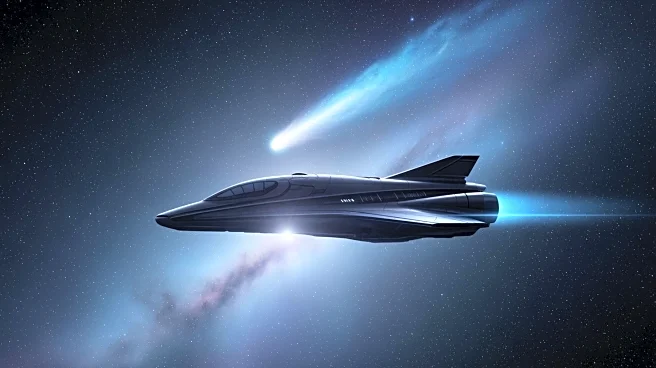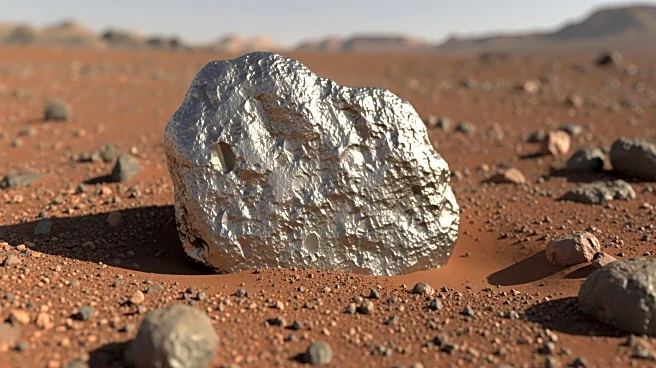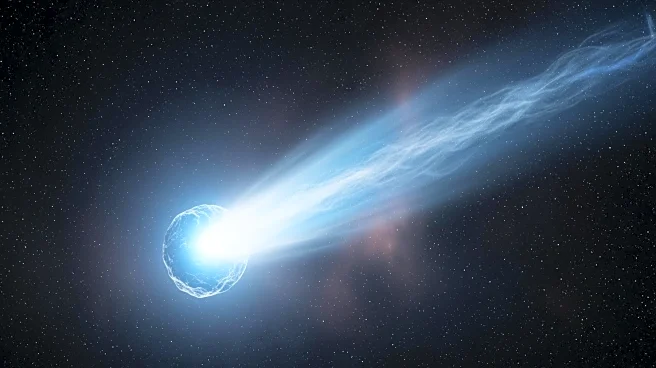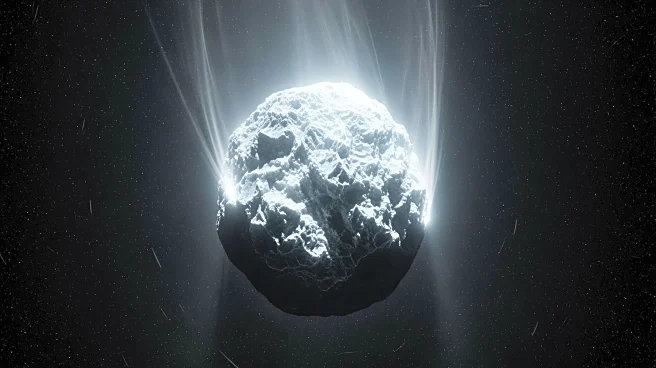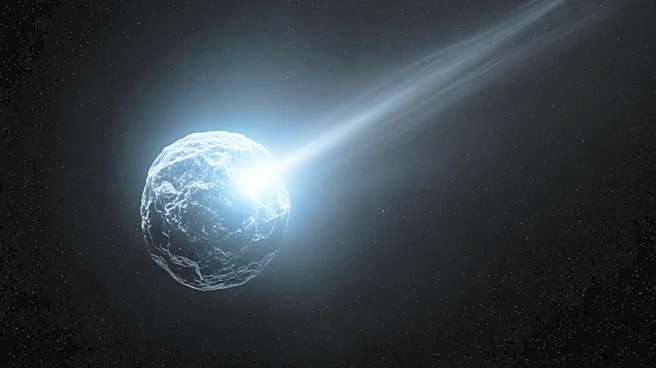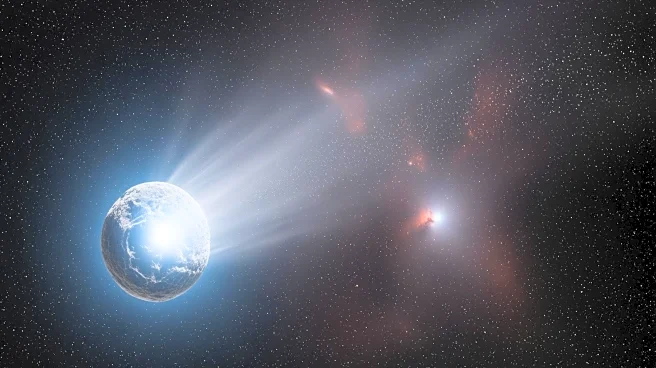What's Happening?
NASA has released close-up images of the interstellar comet 3I/ATLAS, captured by spacecraft orbiting Mars. This comet, only the third interstellar object confirmed to pass through our Solar System, has been
a subject of intense scientific study. The images reveal a coma approximately 1,500 km across, with ultraviolet data showing details about the gas cloud surrounding the comet. Despite some online speculation about its origins, NASA has confirmed that 3I/ATLAS is a natural comet, not alien technology. The comet is currently visible in the pre-dawn sky in Virgo, requiring large binoculars or telescopes for observation.
Why It's Important?
The study of 3I/ATLAS offers a rare opportunity to analyze material formed around another star, providing insights into the composition and behavior of interstellar objects. This event underscores the importance of international collaboration in space exploration, as multiple spacecraft have contributed to the observation campaign. The scientific community stands to gain valuable data that could enhance understanding of cometary physics and interstellar phenomena. Additionally, the public interest in such celestial events can drive educational outreach and inspire future generations of astronomers.
What's Next?
As 3I/ATLAS continues its journey through the Solar System, astronomers will monitor its trajectory and behavior, particularly as it approaches its closest point to Earth in December. Observations will focus on its fading brightness and movement from Virgo into Leo. The data collected will be analyzed to refine models of interstellar comet dynamics and contribute to ongoing discussions about the nature of such objects. NASA and other space agencies may release further findings as the comet progresses.
Beyond the Headlines
The presence of 3I/ATLAS has sparked discussions about the potential for interstellar travel and the search for extraterrestrial life. While NASA has dismissed claims of alien technology, the comet's unusual trajectory and activity have led to speculative theories about its origins. This highlights the need for clear communication from scientific institutions to counter misinformation and educate the public about astronomical phenomena. The event also raises ethical considerations regarding the portrayal of space exploration in media.




